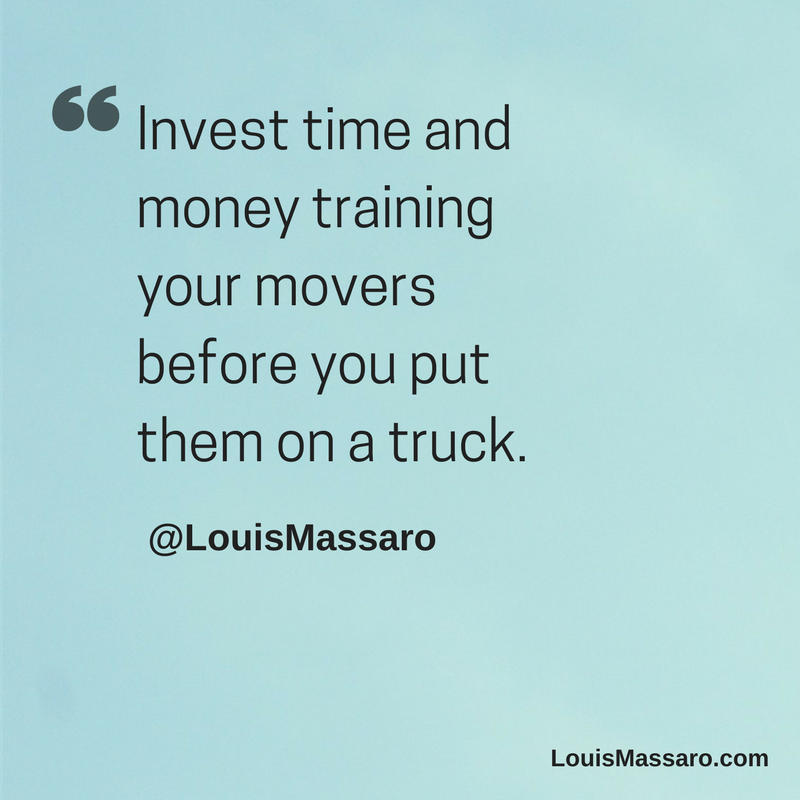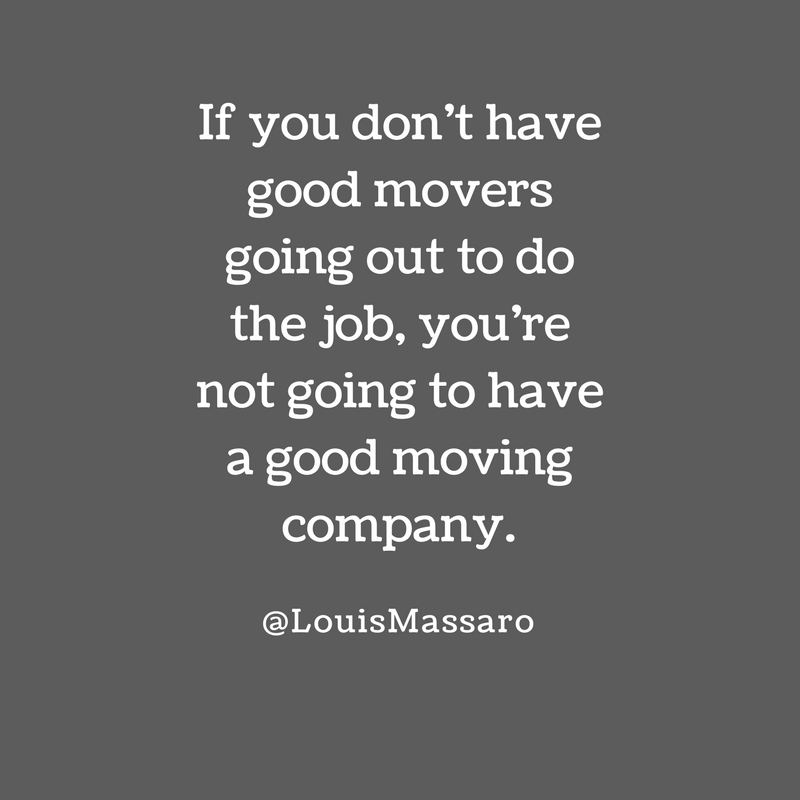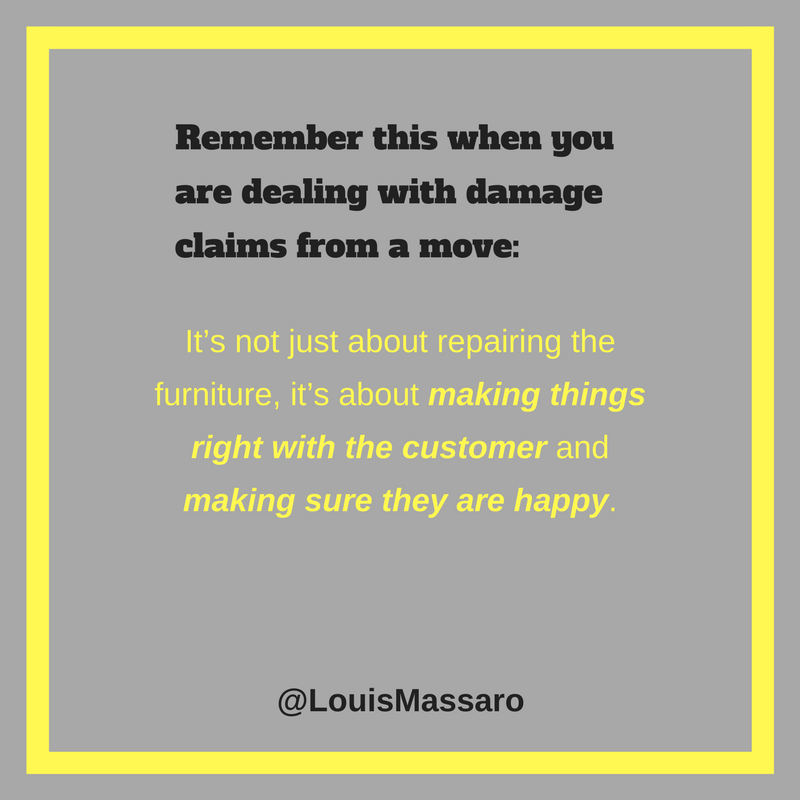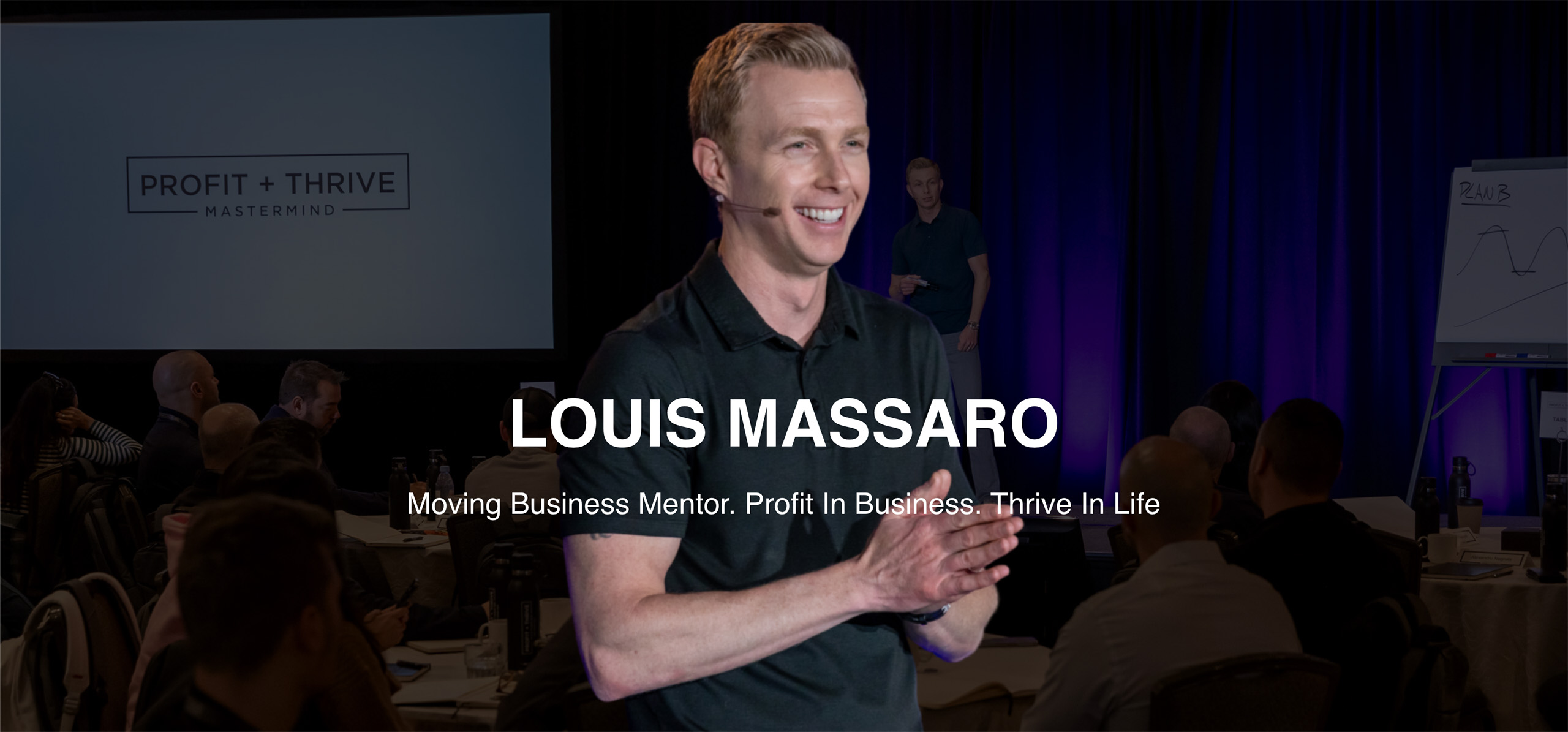SUMMARY
In this episode of The Moving Mastery Podcast, Louis Massaro shares what areas you must train your movers on besides simply how to “move”.
- “Your movers are the front line. Your movers are the face of your company. Your movers are the ones that are going to spend the most time with your customers so we’ve got to do more than just train them how to pad a chair or train them how to load a truck. They need to know how to deal with every situation that happens on the move. They need to know what you expect them to do with each and every move while they’re there with the customer. They need to be trained in customer service.”
- “If you don’t define exactly how you want your movers to behave on the job and the steps that you want them to take from the time that they get there until the time that they’re done and then train them on that, you’re going to have a lot of stress, you’re going to have a hard time growing your company, and you’re going to have movers that are also disgruntled because they don’t have clear direction on what to do.”
- “The basics of moving, training them on how to pad, how to load, how to protect floors, how to protect door jams, how to pack, how to inventory, all the stuff that goes along with moving, that’s great… But if you miss the components that I’m about to share with you in this video, you’re not going to have the customer satisfaction and create the raving fans that you want to really build your business, to get those reviews, that long-term sustainable success in moving.”
- “When you set up your training program, of course, train them how to pad, train them how to load, train them how to use the dolly. Absolutely. But the three things that will take your company to the next level are training them in customer etiquette, resolving conflict, and training them on your company policies and procedures and how you do things, what the process is for each thing that they do. Put these in place, apply these in your business. That’s how you get to the next level.”
- Watch the video to get full training.
HOT NEWS & DEALS!
- Join the Moving CEO Challenge: Official Louis Massaro Community Facebook Group! A place for moving company owners to connect, share ideas, and inspire one another. Click here to join!
- Latest Instagram!
Check out @LouisMassaro for new announcements, valuable tips, and enlightening videos to take your moving company to the NEXT LEVEL!
RELATED POSTS
Hiring Movers: Qualities and Skills to Look For
How to Hire Movers for Your Moving Company
5 Keys To Hiring Movers for Your Moving Company
Positive Reviews, “Cheap Customers” & Charging Movers For Damage?
Paying Movers: 1099 Contractor or W-2 Employee



TRANSCRIPTION
Louis Massaro:
Properly training your movers is one of the most important things you could do to grow a successful moving company, but you’ve got to do more than just train them how to actually move. Your movers are the front line. Your movers are the face of your company. Your movers are the ones that are going to spend the most time with your customers so we’ve got to do more than just train them how to pat a chair or train them how to load a truck. They need to know how to deal with every situation that happens on the move. They need to know what you expect them to do with each and every move while they’re there with the customer. They need to be trained in customer service.
If you don’t define exactly how you want your movers to behave on the job and the steps that you want them to take from the time that they get there until the time that they’re done and then train them on that, you’re going to have a lot of stress, you’re going to have a hard time growing your company, and you’re going to have movers that are also disgruntled because they don’t have clear direction on what to do. If you’re joining us for the first time, my name’s Louis Massaro. I’m Founder and CEO of Moving Mastery, where we help moving company owners set up proven systems and processes in their business to increase profits, reduce stress, and live a better quality of life.
When I started my moving company, what is it, 20 years ago now, I was a 19 year old kid, I had no idea what I was doing. I didn’t know how to move furniture, I didn’t work for a moving company before that, and to try to train my guys was intimidating. And finally, I was like, you know what? I just need to bite the bullet here and go to my best mover and say, “Listen, I need you to show me the ropes. I need you to show me what to do.” And he showed me everything, took me under his wing. Got to work for me, took me under his wing and said, “Let’s start. Here’s how pads are folded. Here’s how we load a truck and build tiers in the truck. Here’s how we pad a dresser and here’s how we pad a chair.” And I learned the basics of how to move. That component can be taught easily once one person in your company knows how to do that.
So whether that’s you or whether you’ve got a mover that is a great mover that can train that to other people that could be taught. But what can’t be taught by other movers or that doesn’t just happen naturally is the intention of how you want those movers to act, behave, and execute on that move. Once I define, “Look, here’s our company policies. Here’s the procedures. Here’s how we do things. Here’s how I want you to show up to the office. Here’s how I want you to show up on the job. If a problem happens, if there’s a damage, here’s what you do next,” once I defined all of that, that really helped me build my company, which I eventually took to a nationwide, eight figure business where we were doing 12,000 moves a year. And I tell you that because, you may say, “Louis, it’s important to train them to be a master mover. They’ve got to know how to do everything before they get out on that truck.”
And after doing 12,000 moves a year, what I can tell you is, if there’s a claim, if there’s a damage, that could be resolved. The problems that can’t be resolved are when you know the mover doesn’t interact well with the customer, the company completely drops the ball, movers get into it on a job in front of the customer, lack of professionalism. Those are the types of jobs where that problem isn’t easily resolved. So the thing that you want to focus on other than, of course, the basics, training them on how to pad, how to load, how to protect floors, how to protect door jams, how to pack, how to inventory, all the stuff that goes along with moving, that’s great, but if you miss the components that I’m about to share with you, you’re not going to have the customer satisfaction and create the raving fans that you want to really build your business, to get those reviews, that longterm sustainable success in moving. You’ve got to make sure that you’re doing these three things.
So the first one is, you’ve got to train your movers in customer etiquette. They need to understand first and foremost where that customer’s coming from. They need to understand that, that customer is uprooting their entire life and moving to a new place, which is stressful by itself, but now they’ve got strange people, movers, coming in. No offense, whoever it is, we’re all strangers. If they don’t know you, you’re a strange person coming in their house. They’ve got strange people coming in their house and touching everything, lifting everything, opening their drawers, going through everything. It’s very invasive. So they need to understand that, you need to train them on that, and train them on how to have customer etiquette while on the job. Give you an example. So let’s say the customer says to your foreman or one of your head guys or your driver and brings them over and says, “This table here, this is an antique. It was from my grandmother. Can you guys be really careful with it?”
What will normally happen is the movers will be like, “Oh yeah, yeah. No problem. Sure.” They might be nice about it. What needs to happen is they need to go above and beyond to show concern for what the customer’s concern is. Meaning, instead of just saying, “Okay, yeah sure, no problem,” the foreman or whoever it is needs to call over the other guys and say, “Hey guys, come over here for a second. Mrs. So-and-so pointed out to me that this piece right here, it’s a really special piece, so let’s all just make sure that we pay really good attention to this and we take extra good care of that.” That little thing, even if it’s unnecessary to just get the job done, will put that customer at ease, let that customer back off the movers, and not be hovering over them in everything they do. If you’ve ever had a customer that just is on your movers for everything they do, it’s because they don’t feel like they have a professional crew there and they feel like they need to be on top of them.
Customer etiquette, if the customer has an issue, the customer has a problem, how do you want them to speak to that customer? This is the type of stuff that needs to be trained. The moving, the carrying, how to use the dolly, train them on that as well, but that will come time of doing it over and over and over again on jobs. Repetition, repetition, repetition. They’ll get better and better at that. All right, so the first thing you want to make sure you train them on is customer etiquette. That also includes, how do they introduce themselves when they get to the job? When they show up, let me ask you how you would want your movers to show up. Would you want them to show up where the drivers here, he rings the doorbell, “Hey, we’re here. I need you to sign this paperwork,” and the other guys are nowhere to be found?
Or does the whole crew show up at the door, the driver’s got the paperwork or his tablet, the helpers got pads and shrink wrap and door jams and everything ready to go, and they introduce themselves to the customer, he introduces the helpers and the rest of the crew? Customer etiquette, make sure that, that’s part of your training program. The second thing you want to make sure is in there is resolving conflict. Resolving conflict, when stuff happens on the job, what do they do? What do they do? Too many times, companies just send guys out, “Hey, go out there,” and they have no clue and what to do when things happen and they wonder why a problem, a damage on the job, or something that the customer thought was going to be one way but was a different way, or maybe the neighbor comes and says, “Hey, you guys need to move your truck,” or whatever it is, who’s training them on how to deal with those situations?
So you want to make sure that part of your training has resolving conflict. “Here’s what happens when the customer’s upset. Here’s what I need you guys to do. Here’s what happens when there’s a damage. Here’s what happens if two movers get in an argument on the job.” Train them on resolving conflict. And the last piece, and really something that will solve most of the problems, are training them on the company policies and procedures, how you want things done. “Here’s our policy on attendance. Here’s our policy on uniform. Here’s our policy on truck inventory. Here’s our policy on your hours, on clocking in and clocking out. Here’s our policy on so on and so on and so on.” You’ve got to train them on what your policies are. I talk to companies all the time and they wonder why their movers just don’t listen and they don’t do things the way that they want them to do it. And I’m like, “Are you training them on these things? Are you repeating those every single day?”
You might have a mover meeting every day or in the morning and people look for fresh topics. Well, maybe you just need to say the same thing every single day until they get it. Repetition, repetition, repetition. So when you set up your training program, of course, train them how to pad, train them how to load, train them how to use the dolly. Absolutely. But the three things that will take your company to the next level are training them in customer etiquette, resolving conflict, and training them on your company policies and procedures and how you do things, what the process is for each thing that they do. Put these in place, apply these in your business. Let me know how it works. And until I see you next time, go out there every single day, profit in your business, thrive in your life. I’ll see you next time.
